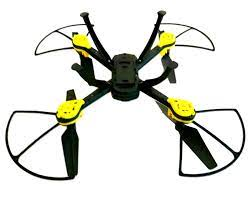In the realm of modern technology, few innovations have captured the public's imagination quite like drones. Initially, these unmanned aerial vehicles (UAVs) emerged as little more than novelties, captivating hobbyists and tech enthusiasts with their aerial acrobatics and photography capabilities. However, as technological advancements have propelled them forward, drones have transcended their recreational origins to become indispensable tools across a myriad of industries.
The evolution of drones can be traced back to their humble beginnings as remote-controlled toys. In their early stages , Droneslover were primarily associated with recreational activities, offering enthusiasts the opportunity to experience the thrill of flight from a unique perspective. With the integration of high-definition cameras, drones quickly found a niche in aerial photography and videography, enabling users to capture stunning images and footage from vantage points previously inaccessible.

As drone technology matured, their applications expanded beyond mere entertainment. Industries began to recognize the potential of drones to revolutionize traditional practices, leading to their adoption in various sectors such as agriculture, construction, and logistics. In agriculture, drones equipped with specialized sensors and imaging systems are employed for precision farming, allowing farmers to monitor crop health, assess soil conditions, and optimize resource utilization with unprecedented efficiency.
Similarly, in the construction industry, drones are utilized for site surveys, progress monitoring, and safety inspections. Their ability to capture detailed aerial imagery enables project managers to track construction activities, identify potential hazards, and ensure adherence to safety protocols. Furthermore, drones equipped with LiDAR (Light Detection and Ranging) technology can generate precise 3D maps of construction sites, facilitating accurate measurements and streamlining the planning process.
In the realm of logistics and transportation, drones are poised to revolutionize last-mile delivery operations. E-commerce giants and logistics companies are exploring drone delivery services as a means to expedite the shipping process and overcome logistical challenges associated with traditional ground-based transportation. By leveraging drones for package delivery, companies can achieve faster delivery times, reduce delivery costs, and minimize environmental impact.
Beyond commercial applications, drones have also become indispensable tools in disaster response and emergency services. Equipped with thermal imaging cameras and gas sensors, drones can swiftly survey disaster-stricken areas, locate survivors, and assess structural damage, enabling first responders to coordinate rescue efforts more effectively. In addition, drones are increasingly being used for environmental monitoring, wildlife conservation, and scientific research, providing researchers with valuable data for studying ecosystems and mitigating environmental threats.
However, as drones continue to proliferate, concerns regarding privacy, security, and regulatory compliance have emerged. Issues such as unauthorized surveillance, airspace congestion, and the risk of mid-air collisions pose significant challenges to the safe and responsible integration of drones into airspace. To address these concerns, regulatory bodies are working to develop comprehensive guidelines and regulations governing the operation of drones, ensuring their safe and ethical use across diverse applications.
In conclusion, the evolution of drones from novelty to necessity exemplifies the transformative power of technology to reshape industries and redefine societal norms. What began as a recreational pastime has evolved into a ubiquitous tool with far-reaching implications for commerce, public safety, and environmental stewardship. As drones continue to evolve and permeate various aspects of our lives, it is essential to strike a balance between innovation and responsibility, harnessing their potential for the greater good while mitigating potential risks.
